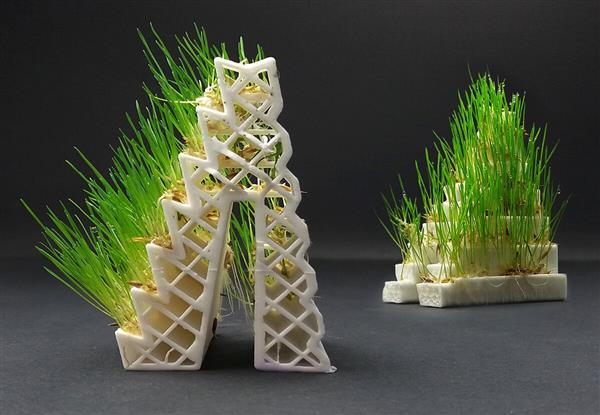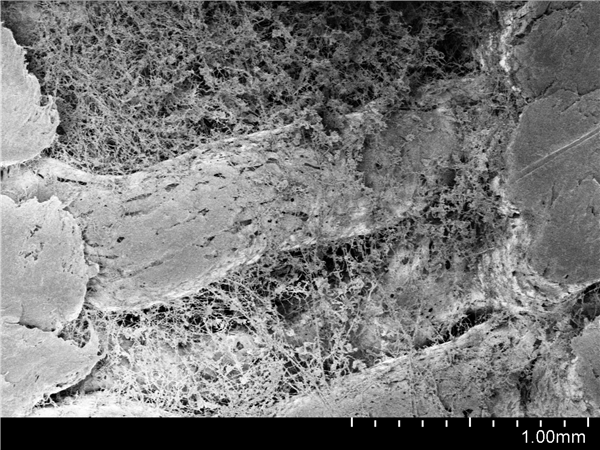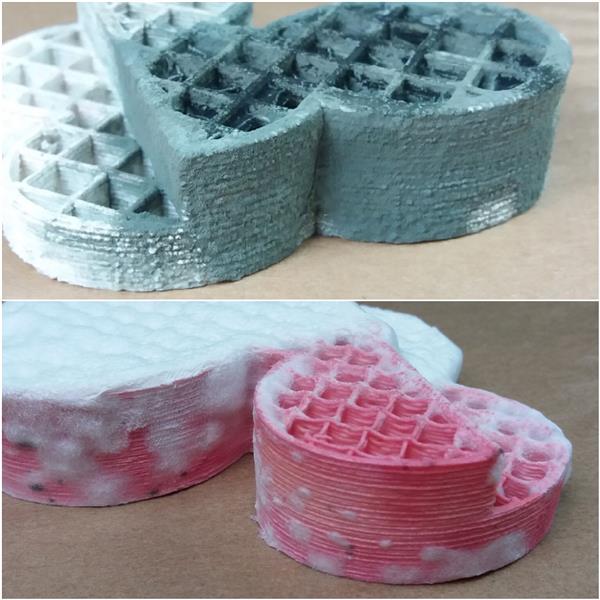Readers of 3D Printing Industry may remember Kai Parthy from our earlier interviews and coverage of the 3D printer filaments made by the German inventor.
Now Kai Parthy is back with another novel filament. Having previously brought the world filaments based on wood and ceramics, to name only a few, Parthy has now launched a biodegradable 3D printing material he calls GROWLAY.
GROWLAY is intended for use with an FDM/FFF 3D printer, and once a design is fabricated the material’s unusual properties can be harnessed. GROWLAY filament can be used as a base for growing plants and other organic matter.
By adding water to your 3D print, spores, seeds or even cheese mold can be encouraged to take hold and cover the print. Using GROWLAY, you could recreate ancient ruins covered in a miniature jungle or add some extra texture to a table top role playing game.

GROWLAY 3D printer filament
The ability of GROWLAY to serve as a growing medium is due to its porosity, and the microcapillaries that run through the material. This means a 3D print made with GROWLAY can absorb water, take in added nutrients such as liquid fertilizer and allow a degree of root ingrowth so that a plant can attach to the print.

Parthys interest in making filament has long since grown beyond his early kitchen experiments. However, he still retains a curiosity that leads him to develop products like GROWLAY.
Experiments by Parthy so far have demonstrated that GROWLAY can be used as base for a wide variety of organic substances. These range from growing lichen to cheese mold. GROWLAY is also suitable for other biological cultures including grass, moss, fungus, mildew, lichen, mycelium, pharma-cultures and mother cells according to Parthy.

GROWLAY is intended for users ranging from academic researchers to makers and even creative chefs. To sterilise the material it is suggested either a liquid or gas method is used, thermal sterilisation is not possible.
Currently two versions of the filament are available.
GROWLAY-white. This version is 100% biodegradable and can be included in compost for easy recycling. GROWLAY white is porous and has micro capillaries.
GROWLAY-brown. This version is recommended where greater long term stability is required. GROWLAY brown is not compostable. It is also porous and has the addition of wood particles, this gives it greater tensile strength and rigidity than the white version.
![GROWLAY brown [L-R] Newly printed, with a white mold and lichen. Photo via Lay Filaments.](https://3dprintingindustry.com/wp-content/uploads/2018/07/GROWLAY-brown-L-R-Newly-printed-with-a-white-mold-and-lichen.-Photo-via-Lay-Filaments..jpeg)
For all the latest 3D printing news, subscribe to the 3D Printing Industry newsletter. Also, follow us on Twitter, and like us on Facebook.
Make your next additive manufacturing career move or hire new talent. Search and post 3D Printing Jobs on our free jobs service.
Featured image shows Kai Parthy’s GROWLAY filament seeded with grass. Photo via Lay Filaments.


